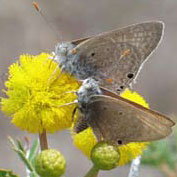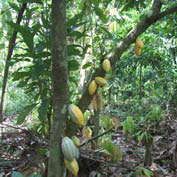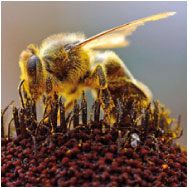
Photo: Dino Martins

Photo: Douglas Williamson

Photo: Peter Kwapong

Photo: Hans Herren


Photo:PDphoto.org
Pollination is a keystone process in both human managed and natural terrestrial ecosystems. It is critical for food production and human livelihoods, and directly links wild ecosystems with agricultural production systems. The vast majority of flowering plant species only produce seeds if animal pollinators move pollen from the anthers to the stigmas of their flowers. Without this service, many interconnected species and processes functioning within an ecosystem would collapse.
Recognising the dimensions of a "pollination crisis" and its links to biodiversity and human livelihoods, the Convention on Biological Diversity has made the conservation and sustainable use of pollinators a priority. At the Fifth Conference of Parties (COP V) in 2000, an International Initiative for the Conservation and Sustainable Use of Pollinators (also known as the International Pollinator Initiative - IPI) was established (COP decision V/5, section II).
A number of regional initiatives, programmes and projects are working toward a common goal of promoting the conservation, restoration and sustainable use of pollinator diversity in agriculture and related ecosystems. Information on these initiatives and the tools and outcomes being produced can be found through the links on this website.
The diversity of pollinators and pollination systems is striking. Most of the 25,000 to 30,000 species of bees (Hymenoptera: Apidae) are effective pollinators, and together with moths, flies, wasps, beetles and butterflies, make up the majority of pollinating species. Vertebrate pollinators include bats, non-flying mammals (several species of monkey, rodents, lemur, tree squirrels, olingo and kinkajou) and birds (hummingbirds, sunbirds, honeycreepers and some parrot species). Current understanding of the pollination process shows that, while interesting specialized relationships exist between plants and their pollinators, healthy pollination services are best ensured by an abundance and diversity of pollinators.
The diversity of pollinators and pollination systems is striking. Most of the 25,000 to 30,000 species of bees (Hymenoptera: Apidae) are effective pollinators, and together with moths, flies, wasps, beetles and butterflies, make up the majority of pollinating species. Vertebrate pollinators include bats, non-flying mammals (several species of monkey, rodents, lemur, tree squirrels, olingo and kinkajou) and birds (hummingbirds, sunbirds, honeycreepers and some parrot species). Current understanding of the pollination process shows that, while interesting specialized relationships exist between plants and their pollinators, healthy pollination services are best ensured by an abundance and diversity of pollinators.
Approximately 80 percent of all flowering plant species are specialized for pollination by animals, mostly insects. The dependence of ecosystems on animal pollinators is even stronger in the tropics than the global average: in the tropical forests of Central America, insects may be responsible for 95 percent of the pollination of canopy trees, and vertebrates (bats and a diversity of other taxa) may pollinate 20 to 25 percent of the subcanopy and understory plants. Insects pollinate a further 50 percent of these. Arid and mountain ecosystems often have highly diverse pollinator communities as well, with finely tuned adaptations to ensure that pollination is effective even when climatic conditions are erratic.
In agro-ecosystems, pollinators are essential for orchard, horticultural and forage production, as well as the production of seed for many root and fibre crops. Pollinators such as bees, birds and bats affect 35 percent of the world's crop production, increasing outputs of 87 of the leading food crops worldwide, plus many plant-derived medicines. It has been estimated that at least 20 genera of animals other than honeybees provide pollination services to the world's most important crops. For human nutrition the benefits of pollination include not just abundance of fruits, nuts and seeds, but also their variety and quality; the contribution of animal-pollinated foodstuffs to human nutritional diversity, vitamin sufficiency and food quality is substantial.
Crops produce optimally with a suite of pollinators possibly including, but not limited to managed honeybees. A diverse assemblage of pollinators, with different traits and responses to ambient conditions, is one of the best ways of minimizing risks due to climatic change. The "insurance" provided by a diversity of pollinators ensures that there are effective pollinators not just for current conditions, but for future conditions as well. Resilience can be built in agroecoystems through biodiversity.